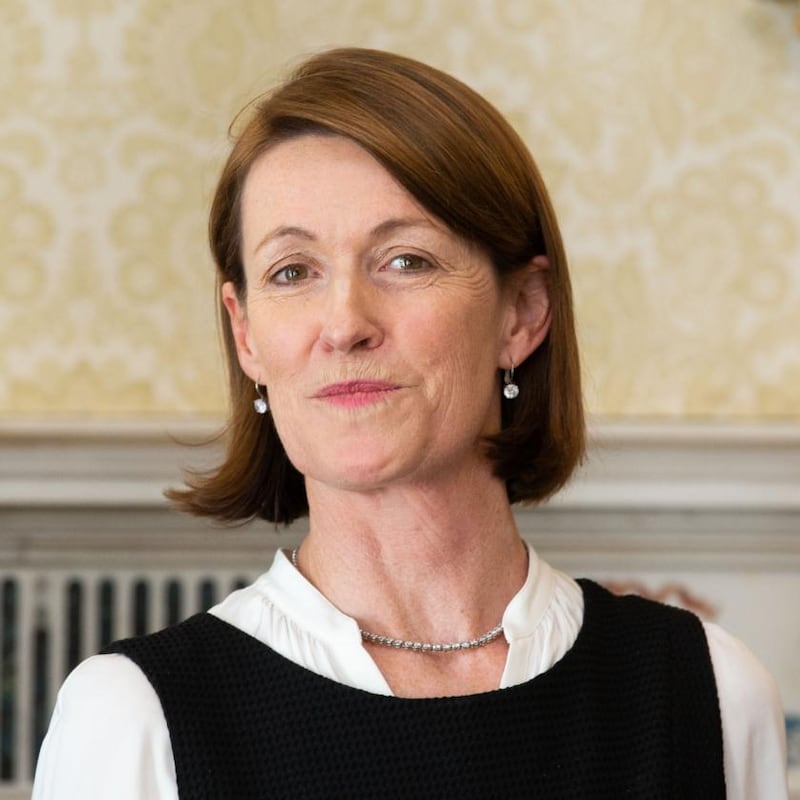New guidelines cutting awards for minor personal injuries have had such an "immediate and colossal" impact that they have caused "a bit of a shock", according to the head of the Personal Injuries Assessment Board.
"The talk about an insurance reform agenda has been going on for about 20 years but this is the first time I would say there has been a significant change in the sector," the chief executive of PIAB, Rosalind Carroll told The Irish Times.
“Even though it was talked about for so long, there was an element of ‘No’, even when our first numbers came out after the guidelines. We sent out one of our first letters to a solicitor representing a claimant and they thought it was a typo,” she declared.
Award offers from PIAB have dropped by more than 42 per cent since the guidelines became operational in April 2021 after they were adopted by a majority of the State's judges in a vote of the Judicial Council.
When special damages such as for loss of earnings are taken out, the actual overall cut in general damages is 47 per cent, Carroll pointed out. Meanwhile, awards for slips and fall injuries now average €9,423.
The impact of the guidelines on injury awards has been “immediate and colossal”, PIAB declared, as it published its awards statistics from April to December 2021.
The guidelines have effected a “recalibration” of awards in line with international norms as well as the intended certainty and consistency of awards, as reflected in the 42 per cent overall drop in award values, mainly for minor soft tissue injuries.
Significant injury awards have not been recalibrated as such, Carroll stressed.
Almost half of PIAB awards post-guidelines are under €10,000 and 20 per cent are under €5,000, compared with 12 per cent of pre-guidelines awards under €10,000.
While the courts' interpretation of the guidelines is still awaited as cases under the guidelines have yet to be fully litigated, they are "very prescriptive" compared with the previous guidelines in the Book of Quantum, said Carroll. In relation to minor neck and back injuries, one category is now between €3,000 and €6,000 when the previous maximum was up to €24,000.
The acceptance rate for the lower awards from April 2021 to the end of 2021 was 37 per cent, down from 51 per cent in 2020.
Given the significance of the changes, and that the High Court’s judgment on a lead challenge to their constitutionality is pending, Carroll was not surprised about that but said she hoped to see the acceptance rate rise over time.
I don't like references to claims culture, people pay insurance for a reason
The number of personal injury claims has fallen from 31,000 in 2019 to 26,000 in 2020 and 21,000 last year, a cumulative fall of some 31 per cent.
Carroll cautioned that the most significant reason for that is not the guidelines but the dramatic reduction in people and vehicles’ movements resulting from the Covid-19 pandemic.
She noted that High Court president Ms Justice Mary Irvine, who chaired the committee of judges who drafted the guidelines, had pointed out, although previous higher award values had derived mainly from settlements of cases as few cases went to court, there was still "a lot of blaming" of the courts.

One of the reasons PIAB was set up to was try to avoid unnecessary litigation and bring a fair and independent assessment to people early on to settle their claim without incurring additional costs, Carroll said.
“I don’t like references to claims culture, people pay insurance for a reason. It’s important to recognise there are genuine claims but, at the same time, all this additional cost is being entered into the system via litigation.”
In motor insurance, only about two per cent of claims are litigated and just four per cent of employer and public liability claims are actually heard in court, with the vast majority get settled post-PIAB on the court steps, she says.
The rise in the value of awards for claims post-PIAB is mainly to meet “significant additional legal costs”. The guidelines are intended to take extra costs out, but that will take a few years, Carroll said.
PIAB started publishing award figures to increase transparency, but insurers and the Court Service itself needs to do the same so that people can make informed choices, she said.
Some claimants may have been told they would get near the old higher award but they need to ensure they are comparing like with like, including age and employment, she said. “People’s mindsets will need to change.”
PIAB is “absolutely agnostic” whether someone is represented or not, what it wants is a fair award without the need for litigation, she said.
We're not there for insurers or for claimants, we're there to ensure someone gets a fair award for something that was not their fault
Lawyers, too, face “a period of readjustment”, she said. For some minor claims, there is “presumably a commercial reality” for lawyers in relation to the cost of the award “and what makes financial sense”.
While claim agents came into the UK market instead of lawyers to help people with applications, PIAB does not believe claimants here need to do that as the system is “quite simple”.
“We don’t want people to feel they cannot navigate the system, they can come into us and our customer service centre can advise of the various steps they have to take.”
“We’re not there for insurers or for claimants, we’re there to ensure someone gets a fair award for something that was not their fault.”
Under the existing system, claims to PIAB involve a fault on behalf of someone else and essentially involve a desk-based assessment. As part of the insurance reform agenda, new legislation is coming that will rename PIAB as the Personal Injuries Resolution Board with mediation and other extra powers.
That, according to Carroll, will give PIAB more scope to engage with people in a bid to get resolution.
The board’s consent rates, where insurers or respondents who are self-insured consent to PIAB assessment, has typically stayed at about 55 per cent for years, she said.
Some cases are not seeking to be assessed within the PIAB system as local authorities, for example, are trying to ensure no precedents are set and they are not seen as “an easy target”. In some cases, there may be an element of contributory negligence but, as of now, there is no space to negotiate about that, Carroll said.
There is a "huge opportunity" now to get such cases resolved early and take cost out of the legal system, she said. Meath County Council paid out some €8.7 million for public liability claims over the past five years; how much of that, she wonders, went towards legal costs?











